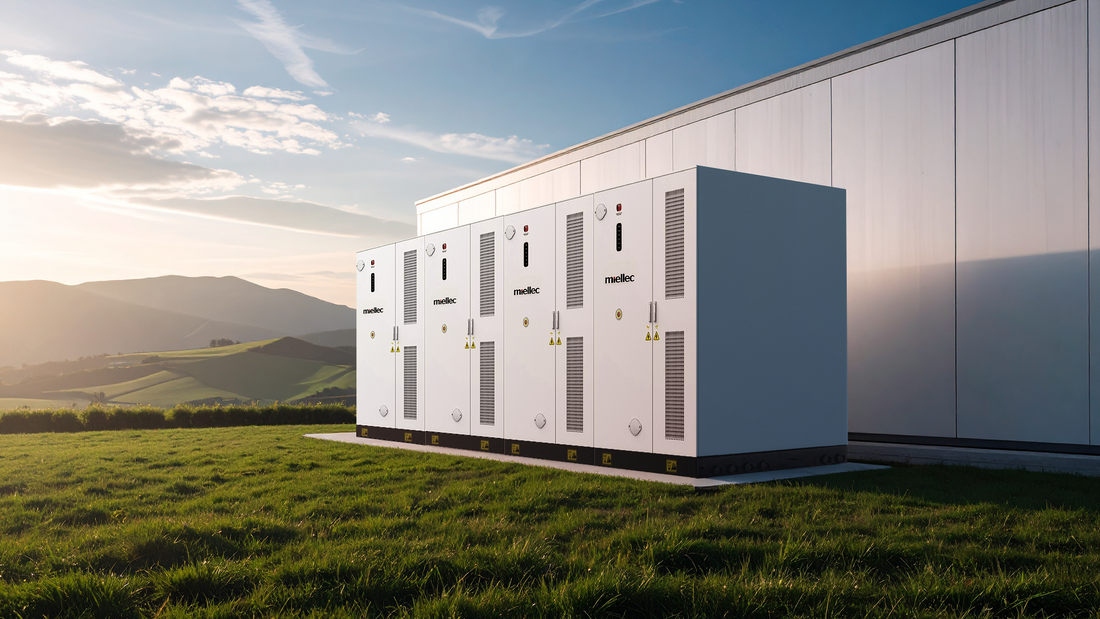In the face of the growing demand for renewable energy sources and the need to improve energy efficiency, energy storage has become one of the key elements of modern energy systems. But what exactly is an energy storage, how does an energy storage work and why is its role becoming increasingly important?
Definition - What is Renewable Energy Storage?
Energy storage is a system that allows energy to be stored in a specific form for later use. This energy can be stored in various forms, such as electrical, thermal, chemical or mechanical energy. Energy storage is used in many sectors - from home photovoltaic installations to large-scale industrial systems and power grids. Home energy storage is increasingly used by households.
Types of energy storage
-
Electrochemical storage: the most popular example is lithium-ion batteries, used in smartphones, electric vehicles and photovoltaic installations. In recent years, other technologies have also been developed, such as sodium-ion or redox flow batteries. Energy storage in electrochemical batteries ensures the stability of electricity supply. An energy storage works by converting electrical energy into chemical energy and vice versa.
-
Mechanical warehouses
-
Compressed Air Storage (CAES) : Energy is stored by compressing air in underground caverns and released when it expands. Storing energy in this form allows for the rapid delivery of electricity to the electrical grid.
-
Flywheels : use the kinetic energy of a rotating mass. They have a very fast response time, making them ideal for stabilizing the power grid.
-
-
Thermal energy storage: Thermal energy storage stores heat in materials such as water, sand, or molten salts. They are used in heating systems and solar power plants, where thermal energy storage enables efficient management of electricity supplies.
-
Chemical storage: Hydrogen is one of the most frequently mentioned chemical energy carriers. In the electrolysis process, water is broken down into hydrogen and oxygen, and the hydrogen can be stored and used to produce electricity in fuel cells. Storing energy in the form of hydrogen allows for long-term storage. Home energy storage can also benefit from such solutions.
-
Gravity storage: energy is stored by lifting mass to a certain height and released when it falls. An example is a pumped-storage power plant, which combines energy storage with its stable supply to the power grid. The energy storage in such cases works based on potential energy.

How does energy storage work?
The operation of an energy storage device depends on the technology used. In the case of lithium-ion batteries, electrical energy is converted into chemical energy during charging and back into electrical energy during discharge. In thermal storage devices, energy is stored as heat, and in mechanical systems – as potential or kinetic energy. An energy storage device enables flexible adjustment of the supply of electrical energy to demand.
Energy storage applications
-
Renewable energy: Energy storage is key to stabilizing power grids powered by intermittent sources such as solar and wind. Energy storage allows excess energy to be stored and used during periods of shortage, ensuring grid stability.
-
Emergency power: Energy storage provides continuous power during power outages, which is crucial in hospitals, data centers, and other critical infrastructure. Energy storage is essential in these situations.
-
Electric mobility: Batteries are the fundamental element of electric vehicles, enabling their operation and reducing greenhouse gas emissions. Storing electricity in cars allows for the development of green transport.
-
Reduction of energy costs: Energy storage allows for cost optimization by charging during periods of lower energy prices and discharging during periods of peak demand. Such energy storage brings economic benefits, especially in households using home energy storage.
Advantages of energy storage
-
Flexibility : the energy storage allows the supply of electricity to be adjusted to changing demand.
-
Emission reduction : Energy storage enables more efficient use of renewable energy sources, helping to reduce carbon dioxide emissions.
-
Energy security : energy storage reduces dependence on energy imports and improves the stability of energy systems.
-
Technological developments : investments in energy storage systems are driving technological innovations in the energy sector.
Challenges and the future of energy storage
Despite many advantages, the development of energy storage is facing challenges, such as high production costs, limited battery life, and disposal problems. However, the dynamic development of technology, including research on new materials and methods of energy storage, gives hope for overcoming these barriers.
In the future, energy storage will play a key role in the energy transformation, supporting the development of a low-carbon economy and providing sources of electricity available on demand. Energy storage will become the foundation of stable and secure energy networks, responding to the challenges of the modern world. Electricity production and storage, management of surplus electricity and stabilization of supply will be the main priorities.





